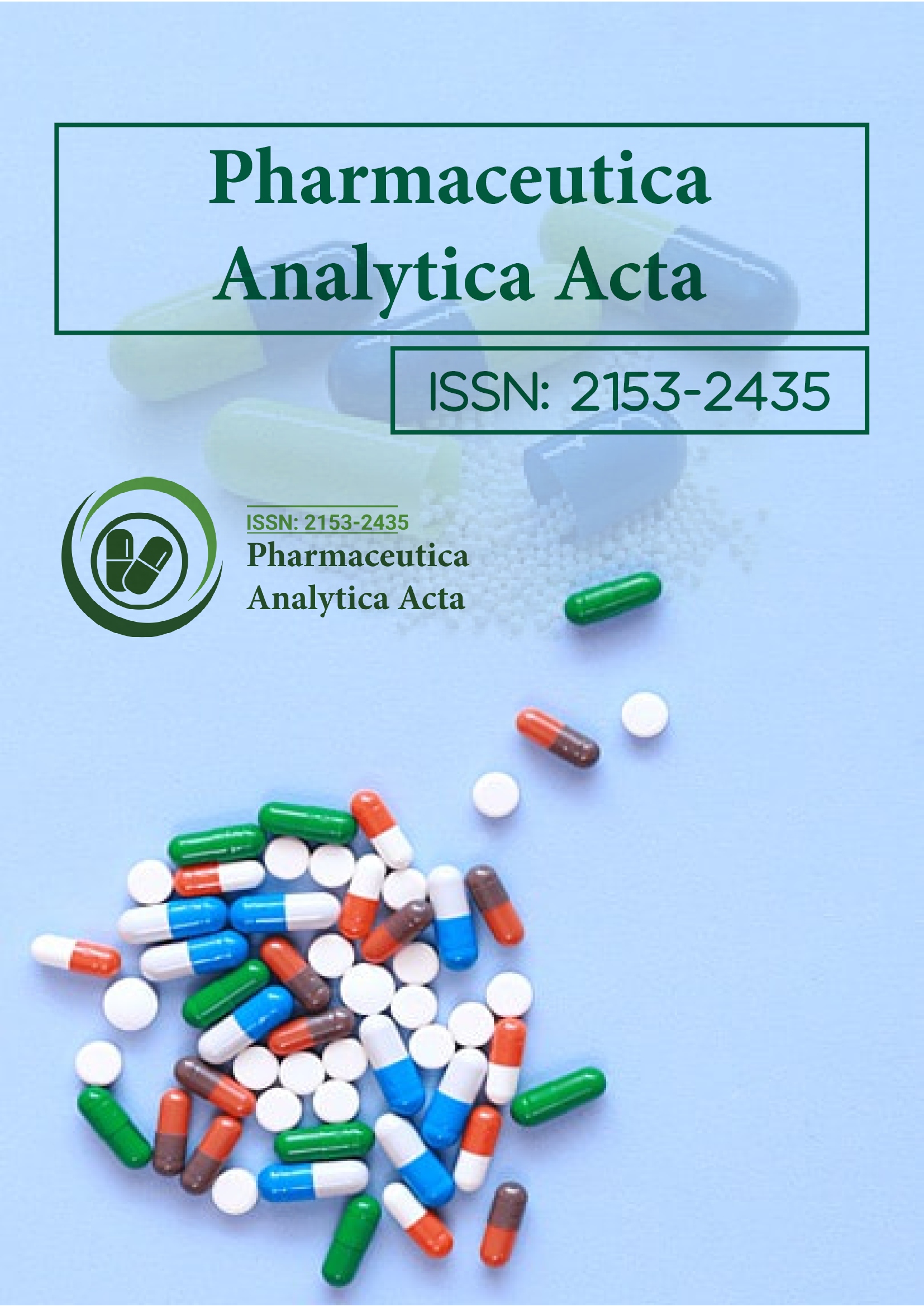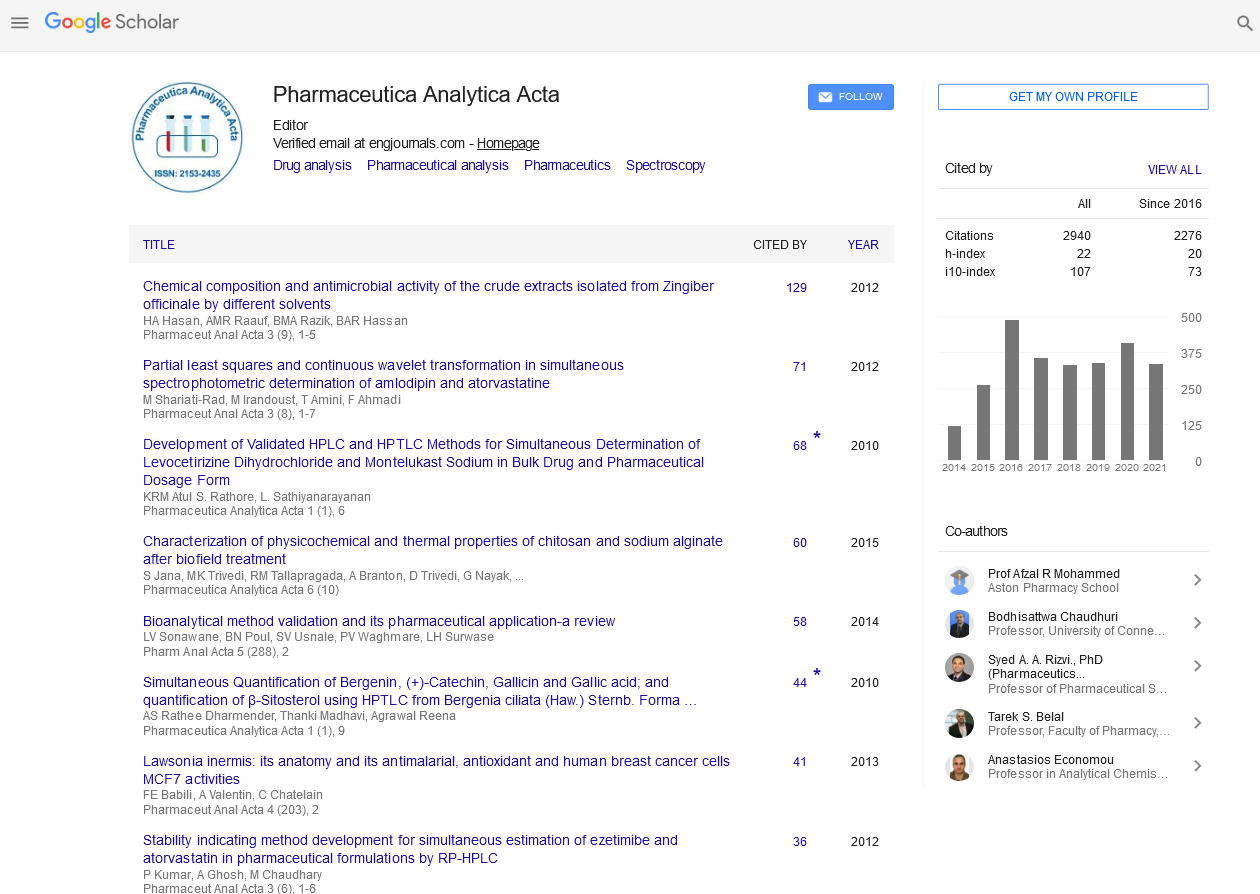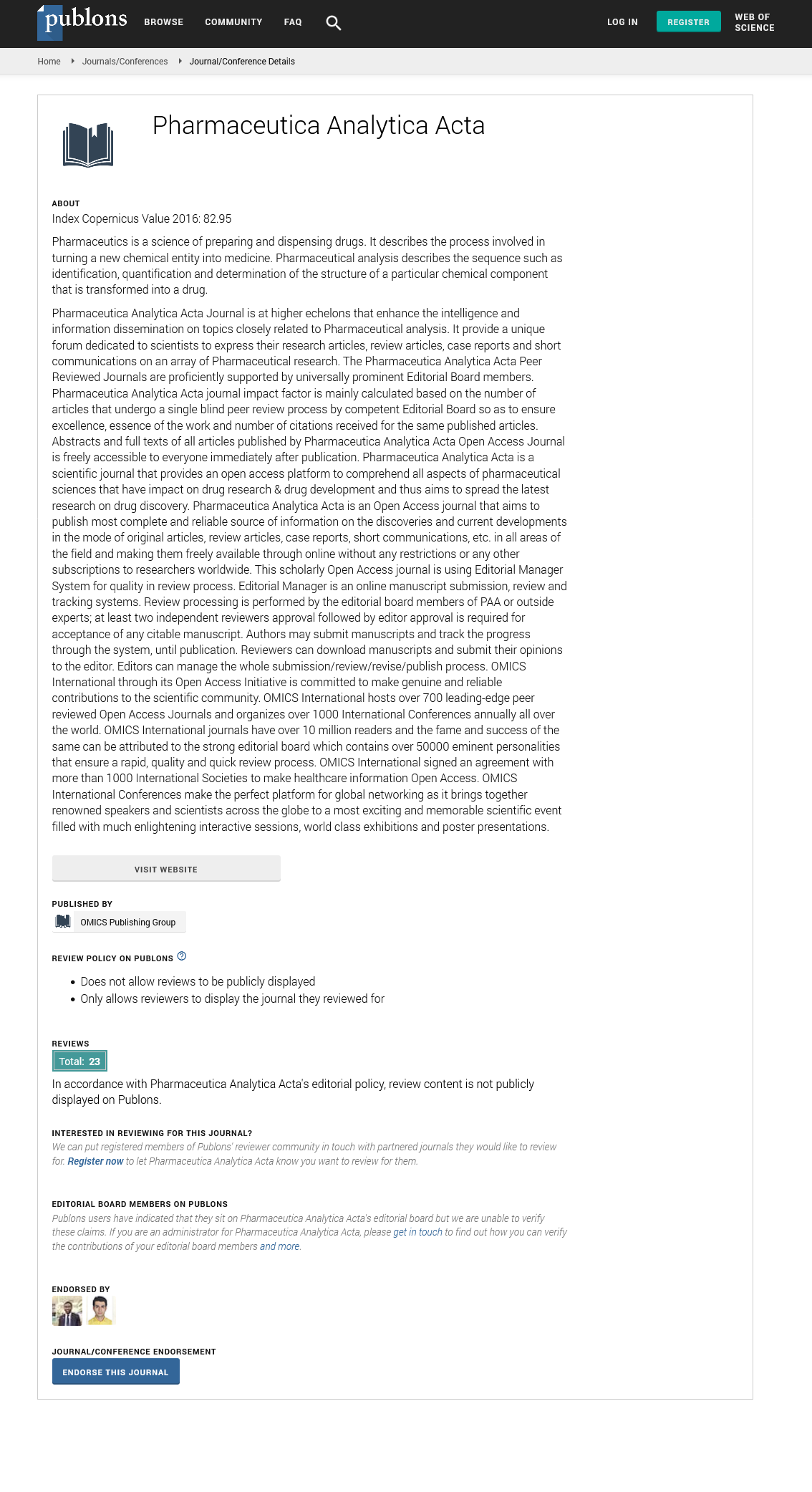Indexed In
- Open J Gate
- Genamics JournalSeek
- Academic Keys
- JournalTOCs
- The Global Impact Factor (GIF)
- China National Knowledge Infrastructure (CNKI)
- Ulrich's Periodicals Directory
- RefSeek
- Hamdard University
- EBSCO A-Z
- OCLC- WorldCat
- Publons
- Geneva Foundation for Medical Education and Research
- Euro Pub
- Google Scholar
Useful Links
Share This Page
Journal Flyer

Open Access Journals
- Agri and Aquaculture
- Biochemistry
- Bioinformatics & Systems Biology
- Business & Management
- Chemistry
- Clinical Sciences
- Engineering
- Food & Nutrition
- General Science
- Genetics & Molecular Biology
- Immunology & Microbiology
- Medical Sciences
- Neuroscience & Psychology
- Nursing & Health Care
- Pharmaceutical Sciences
Perspective - (2025) Volume 16, Issue 2
Ensuring Accuracy and Reliability through Validation and Standardisation of Analytical Methods
Thomas Wright*Received: 31-May-2025, Manuscript No. PAA-25-30220; Editor assigned: 02-Jun-2025, Pre QC No. PAA-25-30220; Reviewed: 16-Jun-2025, QC No. PAA-25-30220; Revised: 21-Jun-2025, Manuscript No. PAA-25-30220; Published: 30-Jun-2025, DOI: 10.35248/2153-2435.25.16.818
Description
In pharmaceutical analysis, the reliability of data depends fundamentally on the quality of the analytical methods employed. An analytical procedure that has not been rigorously validated may produce inaccurate or irreproducible results, potentially compromising drug quality, safety and regulatory compliance. Validation and standardization of analytical methods ensure that measurements are precise, accurate and appropriate for their intended use. By establishing confidence in analytical results, scientists can make informed decisions about drug development, manufacturing and quality assurance. Method validation is a systematic process that confirms whether an analytical technique produces reliable and consistent data. A validated method provides a clear demonstration that it is suitable for its specific purpose, whether that involves quantifying the active pharmaceutical ingredient, detecting impurities, or evaluating stability. Key validation parameters include calibration, linearity, accuracy, precision, specificity, sensitivity and robustness. Each of these aspects is critical to ensuring that analytical results can be trusted across different laboratories, instruments and operators.
Calibration strategies form the foundation of method validation. They involve establishing a relationship between instrument response and known concentrations of the analyte. Accurate calibration allows analysts to quantify drug substances reliably, even at low concentrations. Linearity assesses whether the analytical response is directly proportional to the concentration over the intended range. A linear relationship is essential for producing valid quantitative results and for interpreting measurements in quality control and regulatory contexts. Accuracy and precision provide complementary measures of method performance. Accuracy evaluates how close the measured value is to the true value, while precision examines the reproducibility of measurements under defined conditions. Precision is typically assessed through repeatability, which measures consistency under identical conditions and intermediate precision, which examines variability across different days, instruments, or operators. Both metrics are essential to demonstrate that a method produces dependable results regardless of minor operational variations.
Specificity is another crucial parameter, particularly in pharmaceutical formulations containing multiple components. The analytical method must differentiate the analytic of interest from other substances, such as excipients, degradation products, or contaminants. In practice, this means demonstrating that no interference occurs from matrix components and that the method accurately identifies the target compound in complex samples. Achieving specificity often requires careful selection of separation techniques, detection modes, or sample preparation protocols. Sensitivity is evaluated through the determination of the smallest amount of analytic that can be reliably detected or quantified. Establishing limits of detection and quantification ensures that even trace levels of drug substances or impurities can be accurately measured. This is particularly important for impurity monitoring, pharmacokinetic studies and stability testing, where low-level compounds may have significant implications for product safety and efficacy.
Robustness assesses how small, deliberate variations in method parameters affect performance. For example, minor changes in temperature, pH, or flow rate should not significantly alter the outcome of the analysis. Demonstrating robustness provides confidence that the method will remain reliable under typical laboratory conditions and reduces the risk of method failure during routine operation. System suitability checks complement this by verifying instrument performance before and during sample analysis. These checks often include monitoring signal stability, resolution and response consistency to ensure that measurements remain valid throughout a batch of samples. In practice, method validation is a multi-step process. It begins with careful sample preparation, which may involve extraction, filtration, or dilution to ensure that the analytic is appropriately presented to the analytical system. Instrument parameters are then optimized, sometimes using structured experimental approaches such as design-of-experiments, to achieve the best possible performance. Following optimization, validation experiments are performed to evaluate all relevant performance characteristics. The results are documented systematically, with acceptance criteria defined in advance to determine whether the method meets established standards.
Standardization complements validation by ensuring that validated methods are applied consistently across laboratories and projects. Standardization involves establishing clear protocols, operating procedures and documentation practices so that the method produces comparable results regardless of who performs the analysis. It may also involve inter-laboratory studies, where the method is tested at multiple sites to confirm reproducibility and reliability. Standardization is particularly important in multi-site pharmaceutical operations, contract research laboratories and regulatory submissions, where consistency of data is critical for decision-making and compliance. Validated and standardized analytical methods underpin many aspects of pharmaceutical development and manufacturing. They support quality control by ensuring that drug products meet specifications for purity, potency and stability. They provide reliable data for pharmacokinetic and bioavailability studies, enabling accurate assessment of absorption, distribution, metabolism and elimination of drug substances. In stability testing, validated methods allow scientists to monitor degradation over time and under various storage conditions. Regulatory agencies require documentation of validated analytical procedures in submissions for new drug approvals, emphasizing the central role of method validation in ensuring public safety.
Citation: Wright T (2025). Ensuring Accuracy and Reliability through Validation and Standardization of Analytical Methods. Pharm Anal Acta. 16:818.
Copyright: © 2025 Wright T. This is an open-access article distributed under the terms of the Creative Commons Attribution License, which permits unrestricted use, distribution and reproduction in any medium, provided the original author and source are credited


